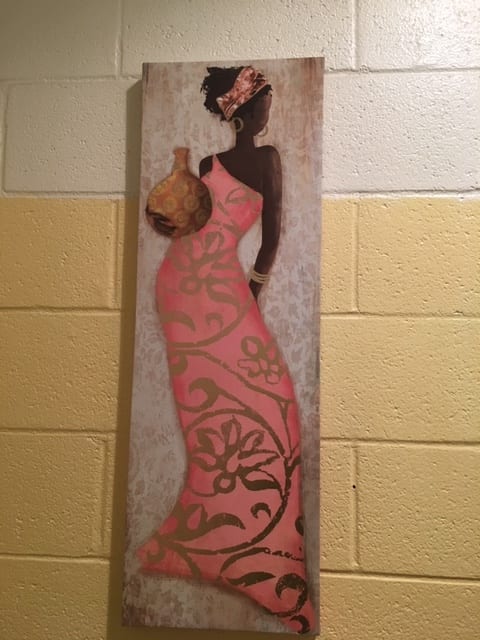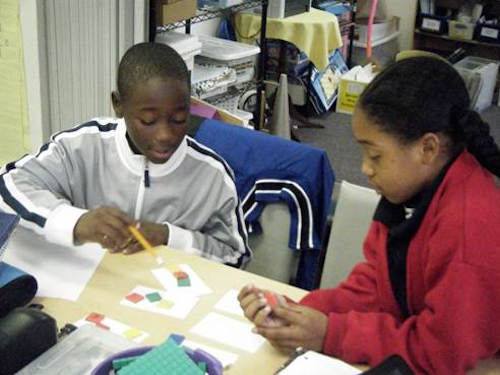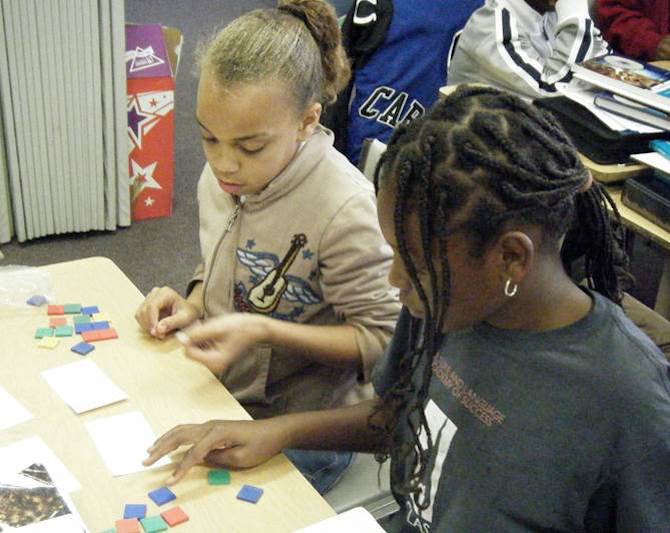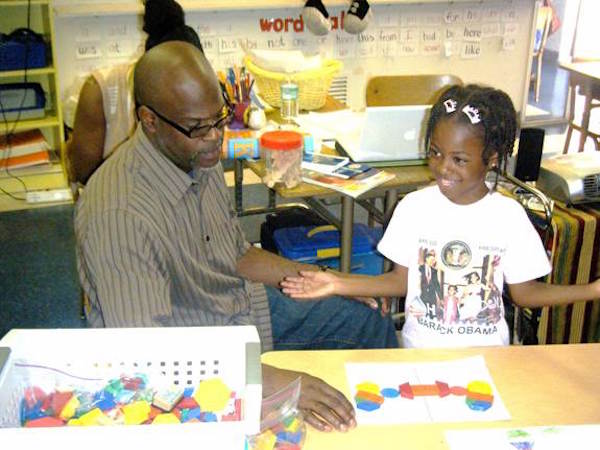Recently, I was in a school bathroom and saw a beautiful painting hanging on the wall of an African woman dressed in African garb. I was immediately filled with awe and joy because the painting radiated beauty and was a positive image in a surprising place. I am often one of few African American women in the room when I visit school districts and seeing art or something that connects to my culture is like looking in a mirror and seeing a reflection of myself.

Credit: Le’Vada Gray
As a classroom teacher, I made it a practice to take and display pictures of my students to document their classwork, discussions, and events to show how they engaged in instruction. The images appeared everywhere: in presentations, bulletin boards, and in newsletters shared with their families. I wanted students to see themselves as mathematicians in the classroom. I also encouraged students to share images of their family and friends too.

Credit: Le’Vada Gray
Culturally responsive researcher, Dr. Sharroky Hollie, in Culturally Responsive Teaching says that students need to see positive images of themselves because it affirms their background and helps students feel welcomed in their learning communities.
Feeling connected to their learning communities help students feel comfortable and able to move towards being independent learners, according to Dr. Zaretta Hammond in Culturally Responsive Teaching and the Brain. She says that the brain needs to see at least three positive representations for every negative representation due to the brain’s negativity bias. The brain uses this bias to look out for threats to our safety and well-being which can be triggered in unwelcoming classrooms.

Credit: Le’Vada Gray
Recent studies show the positive effects of cultural representations on student achievement.
A 2016 study by the American Educational Research Associations concludes that black students were more successful when taught by a Black teacher. The same students were 3 times more likely to be assigned to gifted programs.
A Chicago university recently announced that it is investing a $1 million dollars to recruit men of color to elementary education as part of the Call Me MISTER, Mentors Instructing Students Toward Effective Role Models. This initiative is modeled after Clemson University’s program that began in 2000.
A few ways to represent students at your school/in your classroom:
- Add positive images of students engaged in work to presentations and bulletin boards inside and outside of classrooms
- Have a mix of images of legendary past and present cultural icons from all walks of life (academic, entertainment, and sports) that represent the students in your classroom
- Hang inspirational quotes from cultural icons in schools and classrooms
In what ways do you represent the students in your schools/classrooms to support their learning? Please share in the comments.
 Le’Vada Gray, an educator for more than 15 years, is currently a Director of Professional Learning for Math Solutions. She designs and provides K-8 professional development for school-based math leadership teams and teachers across the country. She has served as a teacher, coach, and administrator. She taught fourth and fifth grades, worked as a K-12 culturally responsive coach in literacy and mathematics, and was responsible for organizing and delivering professional development for a K-8 charter school.
Le’Vada Gray, an educator for more than 15 years, is currently a Director of Professional Learning for Math Solutions. She designs and provides K-8 professional development for school-based math leadership teams and teachers across the country. She has served as a teacher, coach, and administrator. She taught fourth and fifth grades, worked as a K-12 culturally responsive coach in literacy and mathematics, and was responsible for organizing and delivering professional development for a K-8 charter school.
Sources:
Hammond, Zaretta, and Yvette Jackson. Culturally Responsive Teaching and the Brain: Promoting Authentic Engagement and Rigor among Culturally and Linguistically Diverse Students. Corwin, a SAGE Company, 2015.
Hollie, Sharroky, and Eugenia Mora-Flores. Culturally and Linguistically Responsive Teaching and Learning: Classroom Practices for Student Success. Shell Education, 2012.
Nicholson-Crotty, Sean, et al. “Disentangling the Causal Mechanisms of Representative Bureaucracy: Evidence From Assignment of Students to Gifted Programs.” Journal of Public Administration Research and Theory, vol. 26, no. 4, 2016, pp. 745–757., doi:10.1093/jopart/muw024.
Gregory, Ted. “Possible Key to Black Boys’ Academic Success: Hire Black Men as Elementary School Teachers.” Chicago Tribune, 25 July 2018.

 All Blog Posts
All Blog Posts
Comments